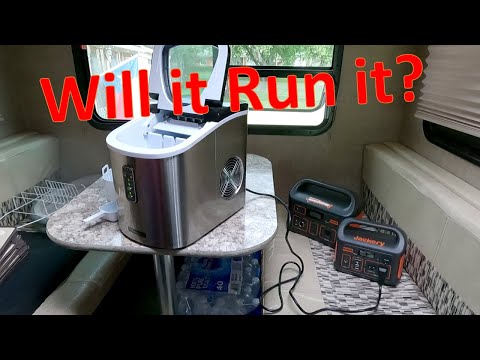Going to Starbucks every time you’re craving an iced tea or coffee can be exhausting, time-consuming, and expensive. What if we told you that you could enjoy cold beverages within the comfort of your home anytime you want? With an ice maker at home, you can wave goodbye to the old days of waiting for hours after filling up your ice cube trays with water and popping them in the freezer.
Now you might be concerned about increased electricity bills. Ice maker electricity usage determined how much it costs to run an ice maker. Because, like other small or big appliances, they may consume a substantial amount of electricity, dramatically increasing your energy cost.
If you’re considering buying a portable ice maker or a refrigerator with an ice maker, keep reading to find out how much your monthly power cost will increase.
Table Of Contents
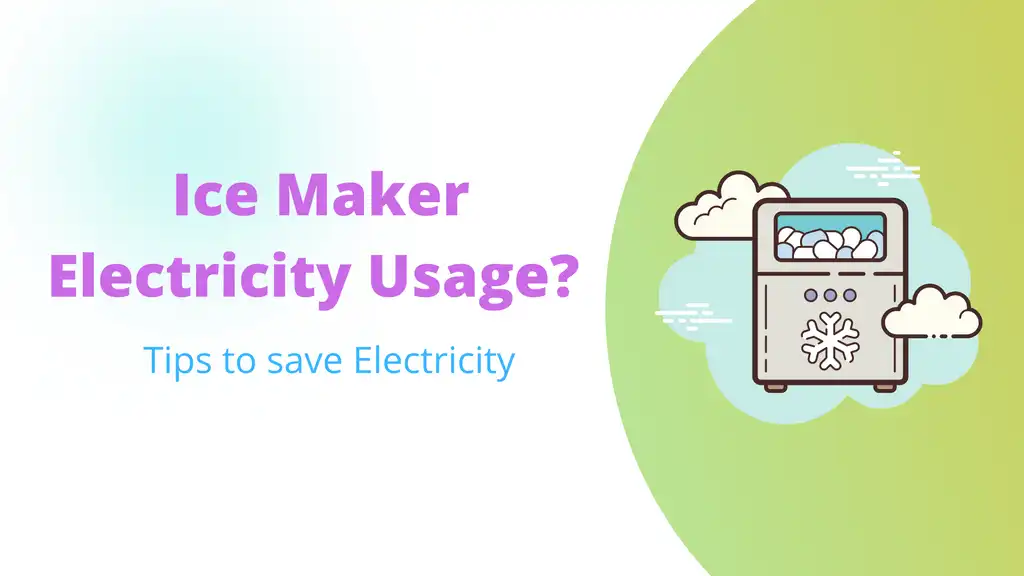
Calculating Countertop Ice Maker Amps
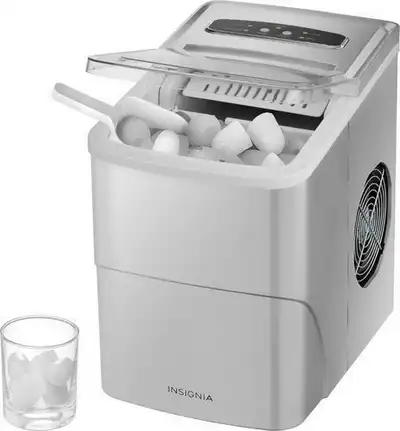
Here’s the deal – there’s no fixed number of amps. The amount of electricity usage varies from brand to brand. Recent small-sized ice makers from brands such as Frigidaire or KitchenAid are energy-efficient, needing about 100 to 140 watts of electricity to produce 2-3 pounds of ice a day. Other ice maker models may need as much as 150 to 300 watts depending on the size, volume, and storage capacity.
Overall, if we convert the ice maker wattage into amperes now, that would be around 0.8 – 2.5 amps, given that the ice maker machine is plugged into a 120V outlet.
On the other hand, if you’re willing to buy a bigger-sized countertop ice maker that can produce between 800- 1200 lbs of ice cubes per day, you’ll need to connect your appliance to a 20-amp AC circuit in a 220V outlet. So, that would be around 4400 watts.
How about an even bigger ice maker machine producing over 1200 lbs of ice daily? How many amps will it require? You’ll need to connect this gigantic ice maker machine to a 30-amp, 220V outlet, leading to overall power consumption of more than 6000 watts.
Calculating Portable Ice Maker Power Consumption
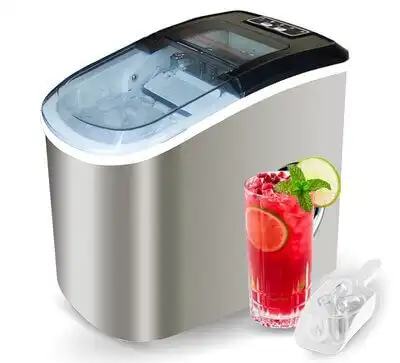
Portable ice makers are super convenient to use and come in handy, especially when vacating at the beach or typically anywhere outdoors in summer. Now it’s time to examine the overall power consumption of a portable ice maker machine. Let’s dig in!
Do Portable Ice Makers use a lot of Energy?
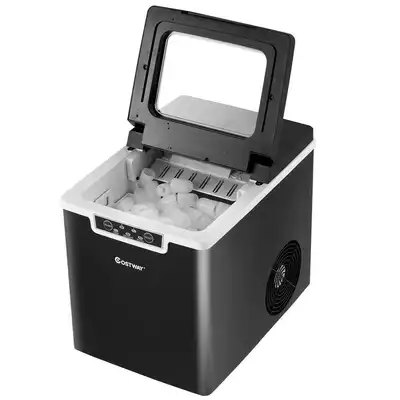
Well, newer ice maker models have been designed with an energy-efficient mechanism that allows them to produce a single batch of ice within 7-10 minutes at least 16 times a day without using much energy. Using an older model will draw in more electricity to produce a batch of ice cubes and take more time, such as 12-15 minutes.
Several more factors also determine whether your ice maker is using a lot of energy or not. If warm air is constantly seeping in through the ice dispenser, the stored ice cubes won’t stay cold for much longer and start to melt.
Your appliance will then consume more power to generate more cold air for regulating the internal temperature, adding to your electricity bills.
If all’s well and you’re regularly keeping the insides of your ice maker clean, then you can rest assured.
How many Amps does a Portable Ice Maker use?
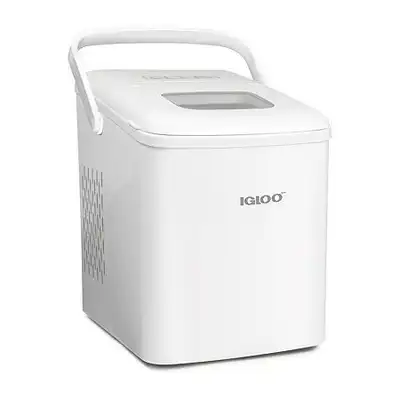
Depending on the size of the ice maker and how many pounds of ice it’s making every 24 hours, on average, 12-20 amps are used. The higher the number of ice cubes produced, the more amps it will need to run.
Most trendy portable ice maker models can produce a minimum of 26 pounds of ice daily to 40 pounds of ice a day and generate 9-10 ice cubes in less than 10 minutes.
Based on this scenario, for every batch of ice cubes produced, a portable ice maker will require 2.0 amps for dumping the ice into your glass and 1.6 amps for making the ice. These numbers may increase if your machine is overworking to freeze water to form ice because of any warm air lurking.
Therefore, our estimation says that the average amps consumed by a 120V portable ice maker machine are 2.5 or 2.6 amps.
How many Watts does a Portable Ice Maker use?
Here’s a simple trick – to calculate the watts of an ice maker, simply multiply volts × amps. Let’s say if your appliance is running on 12V and using 10 amps, then 12 × 10 = 120 watts.
In general, a portable ice maker that can produce a pound of ice per hour or more will use between 120 to 160 watts to a maximum of 200 watts. That means at a rate of 350 kWh per month, costing you around $21 (or more) to run a portable ice maker.
How to Reduce Ice Maker Electricity Usage?
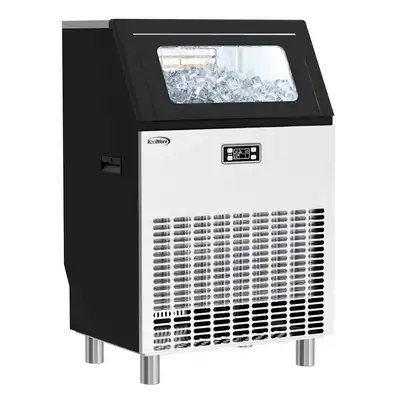
Ice machines consume enormous amounts of electricity, and there is nothing anyone can do about it. For example, an ordinary air-cooled ice maker uses around 5,000 kWh per year. In comparison, an Energy Star-certified ice machine uses 15% to 23% less electricity than a non-certified one.
If you’ve looked in the back of your refrigerator, you know how filthy it can get. Ice makers, like refrigerators, dryers, washers, and other water-powered appliances, may gather a lot of rust, grime, and dust. This, in turn, can result in huge mineral deposits, progressively reducing the machine’s productivity and, at some point, killing it.
Another simple technique to save electricity is to change the incoming water pressure. This will also assist you in cutting your water use considerably. If the water pressure on your ice maker is not already set, you may easily modify it manually.
Most automated ice makers contain a lever indicating when the ice tray is full. By entirely raising the lever, you may switch off the ice maker, return to replenishing plastic trays, and recuperate some energy savings.
Conclusion
Ice makers don’t need much energy and money to run efficiently if adequately maintained. It costs less than $1 a day to run an ice maker. If you want to reduce your ice maker electricity usage, you should use cold water instead and regularly clean it up.
